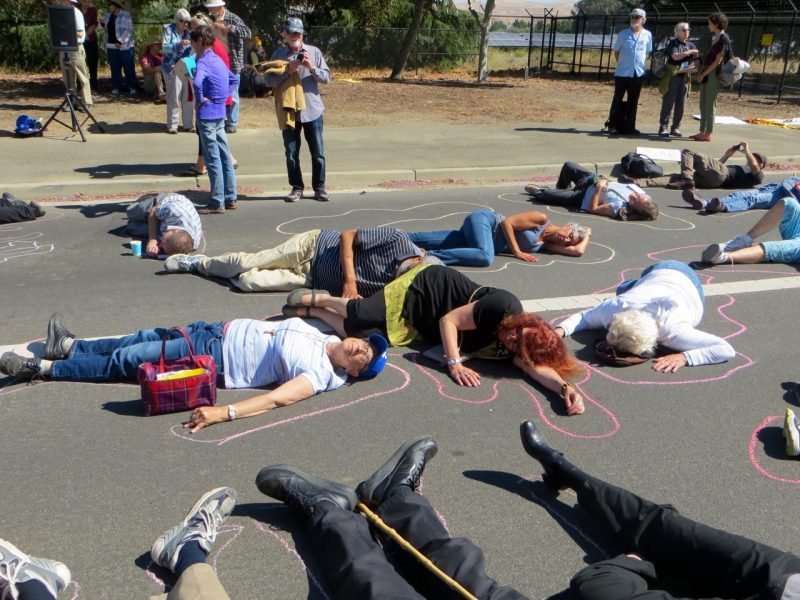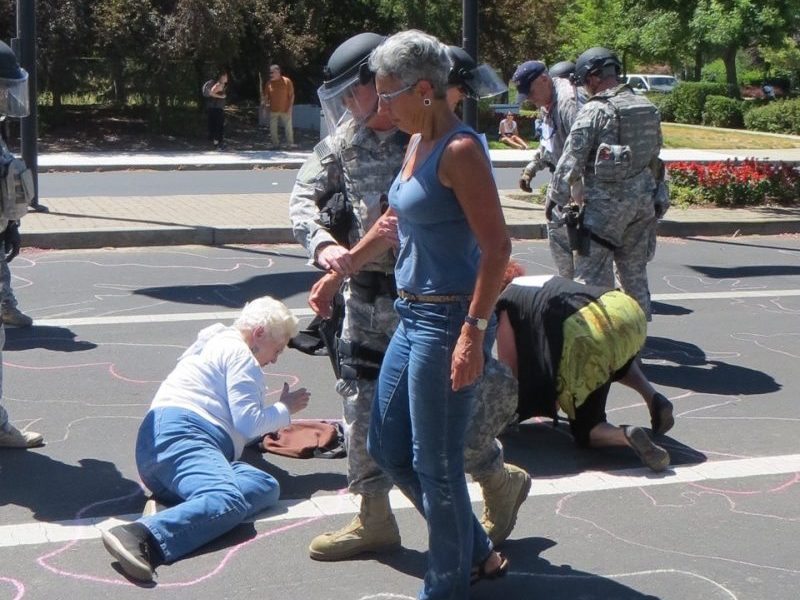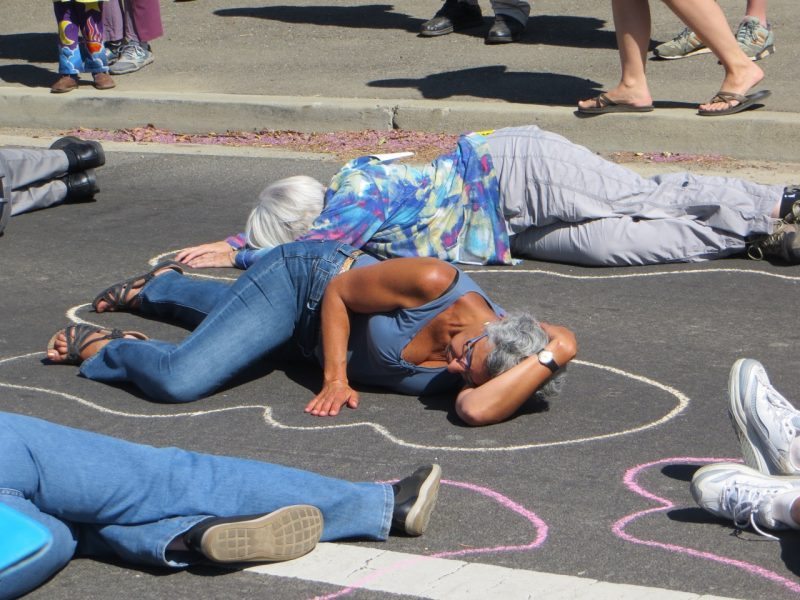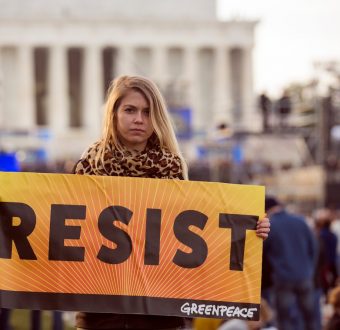It was August 9, 2016, the 71st anniversary of the United States’ nuclear bombing of Nagasaki, Japan. Once again, I had traveled 50 miles to my local nuclear weapons design headquarters at Lawrence Livermore National Laboratory to risk arrest.
Before the Livermore police handcuffed me, I — and scores of other people — had been lying face down in the street as if felled by a nuclear explosion, blocking the gate to the Lab. Men, women, and children outlined our bodies in chalk to mimic the shadows left on the streets of Nagasaki after that deadly bomb erupted. Those shadows formed in Japan when incinerated human flesh permanently melted into the concrete.

Photo by Heather Davison.
My experience barely mirrored those who were burned, maimed, or died in 1945. But nonetheless, I laid on the pavement for two hours to remember their sacrifice. I gave up my freedom to say ‘no.’ I won’t forget those who died or suffered from the development, testing, and use of nuclear weapons.
Especially when experts at Western States Legal Foundation and Tri-Valley CARES tell us that the United States plans to spend $1 trillion in the next 30 years to modernize its nuclear bombs and warheads, the submarines, missiles and bombers needed to deliver them, and the infrastructure to sustain the nuclear enterprise indefinitely.
Especially when these same experts report that scientists at the Lab are modifying a new warhead for a new long-range standoff weapon capable of launching a nuclear sneak attack.
Eliminating the world’s nuclear arsenal — which threatens us all and which one presidential candidate suggests he won’t refuse to use — demands global action.
For decades, people from around the world have signed petitions, filed lawsuits, written articles, drafted legislation, and donated money and time to end the nuclear arms race. At Greenpeace, we have done all of this and have used non-violent direct action to stop the design, development, testing and use of nuclear weapons.
Today, I joined that group with my body, heart and soul.

Photo by Heather Davison.
Karen Topakian is the Greenpeace Inc. Board Chair. She started her career at Greenpeace in San Francisco in 1987, when she joined the newly created Nuclear Free Seas campaign.


